Note
When a ditto turns into an inanimate object, what happens to its organs?
Another great question about an interesting Pokémon!
So the short answer - ditto doesn't have organs. I think Ditto is a sort of slime mold. It is like a conjunction of billions of individual cells and protoplasm that all communicate instantly with one another to relay information. Specialized cells near its head (again, no organs or body parts so we have to use the terminology with a grain of salt) have been adapted to perceive light, colour and shapes in the form of eyes, as well as cells that can vibrate, relax and contract, to provide sound and a mouth. Every other cell in its body shares information through the protoplasmic soup that is its body, and since this information is shared at a similar speed and way as neurons in humans at speeds of 50 meters per second or 100 miles an hour, it can transform almost instantly.

Here's another interesting question: are Ditto man made?
Well, for those of you who don't know the Ditto and Mew theory, it basically says that Dittos are failed cloning attempts at Mew. Mew is the only other Pokémon that can learn transform, which makes sense since it is the ancestor of all Pokémon. So in theory it should house all of the genetic makeup to potentially give rise to any Pokémon to ever exist. Ditto are found all over Cinnabar Mansion, which is where the cloning experiments were conducted on Mew. They both also have the same weight, size, and shiny colour.
So I personally believe that ditto can be found both in the wild and are man made. There are ditto on Route 34 and 35 in Gold, Silver, and Crystal, so I don't believe that all of the ditto in the world are purely man made. However I struggle to find the connection between man made and wild Ditto. Are they completely identical genetically? If they all have the same genetic makeup as Mew, then could wild Ditto just be globs of wild Mew that fell off somehow? Perhaps wild Ditto reproduce asexually as real life slime molds do, and for minute genetic diversity they intermingle and share cells with other Ditto that came from Mews somehow.
Lots to think about! Thanks for the question, I hope I answered it!
25 notes
·
View notes
Note
How do porygon get to the real world from the computers?
Thank you for the question! I'm sorry it took me so long to get to it, but my office hours are now open so feel free to ask any questions and I can get to them sooner!
So Porygon is made-up entirely of code which doesn't make sense because code is essentially computer language. It's as if saying a Pokémon is made up entirely of sound. It's not exactly a tangible, physical thing.
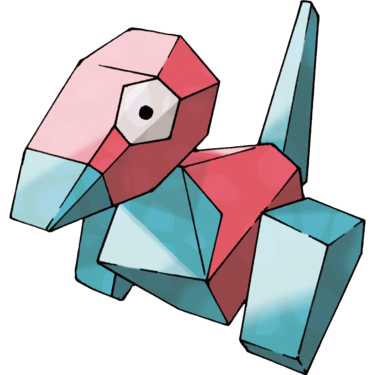
So when we think about what makes up most Pokémon (bar mythicals and legendaries) for the most part we can assume that Pokémon share the same molecular makeup as many other living things - carbon. This gets a little tricky when talking about rock or steel Pokémon like Geodude or Steelix, but let's assume that for most other types of Pokémon they are carbon-based lifeforms. But does that mean Porygon is a carbon-based lifeform?
One theory I had is that Porygon is kind of made from a 3D Printing mechanic, but in order to 3D print anything you first need a design and plastic filaments. I don't think Porygon is made up of plastic since it can freely move into and out of cyberspace. So in order for a Pokémon to be "made" it has to have some sort of physical compound that it can build itself upon, like plastic in 3D prints, or metal compounds like iron and magnesium for rock Pokémon.
Here's another kink in the gears - Porygon2 is designed to travel through space as per its Pokédex entry. Since we've already established that Porygon is almost made up of sound, Porygon2 wouldn't be able to exist in space because there is no air - and thus no sound. Coding is different than sound, obviously, but you still need a vector to relay the communication that coding is. Hardware, circuitry, anodes, motherboards, they all make up the bits and pieces of computers than allow for coding to exist. So what is coding without a computer? Well, in counties like Finland children are being taught coding in schools without computers, but it's more theoretical and logarithmic thinking (see articles here).

To answer your question, I would assume that since Porygon is entirely man-made when coding becomes cognizant, that is, the coding itself recognizes it is its own being, it can escape the virtual world and manifest itself elsewhere in the form of Porygon. I'm sure that there are many Porygon that are "bred" through computer programs deliberately by scientists, but once these Pokémon are out in the world, I imagine they can sort of asexually reproduce if they manipulate their own code enough. Any significant adjustments to their essential coding would change their makeup entirely, thus producing Porygon2 or Porygon-Z.
A very tricky question to answer, I loved it! Thank you so much!
#pokemon#pokemonbiology#mewistheancestor#profspruce#pokemon headcannon#pokemon theories#pokemon science
7 notes
·
View notes
Note
Greetings!
I'm wondering... between the arid desert and semi-desert of the Karoo, The hot but alternatively dry-and-wet bushveld, the Mediterranean fynbos, and the lush, humid coast lands, where would you expect to find ice types in South Africa?
Oh I LIKE this question! Thank you!
When we think about deserts we often think about hot, dry, and arid wastelands with the sun blasting down and cooking everything that isn't adapted for such conditions. However, technically heat isn't the underlying requirements for a desert. Its precipitation.
A desert is an area that receives no more than 25 cm of precipitation a year.
So what does that have to do with your question?
Well, as you mentioned in your question, there are a lot more ecosystems than simply deserts in South Africa. It sustains rich biodiversity in its plethora of beautiful environments! However, one thing remains - all of these places are hot.
When we think of ice type Pokémon, we think of species that are especially adapted for frigid conditions and ambient temperatures that occasionally drop well below 0 degrees. However, it should be worth mentioning that one adaptation many ice type Pokémon have is the ability to retain liquid water, because yes, even the high arctic is technically a desert as it receives less than a few inches of precipitation a year!
Ice type Pokémon do need to stay cool, but more importantly, they can't lose moisture. Mammals have a particular set of physiological traits to help them stay cool, like fennec foxes that have huge ears to help regulate their internal body temperature.

Other species have other adaptations. Its easier for Athropods like scorpions and arachnids to retain moisture because their exoskeleton is water tight, and they get much of their moisture from their prey. However, Stenocara gracilipes is a species of beetle native to the Namib Desert, and it has evolved a unique ability that helps it get its moisture.

It is drinking the mist. So this species has evolved a carapace that is perfectly engineered to collect water droplets and direct them towards its mouth.
So, in order for an ice type Pokémon to survive in South Africa, its environment needs to be cool, and if its environment can't stay cool and dry, there at least needs to be enough moisture in the air it won't completely dry out.
If there is anything that screams ice, it's penguins, and yes of course there are penguins in Africa!
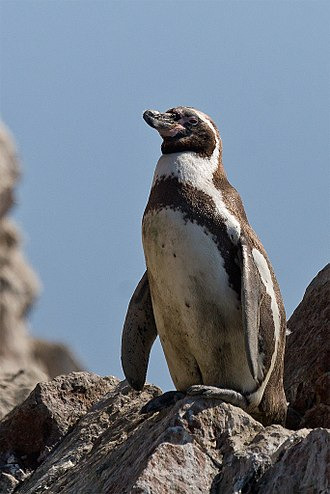
The Humboldt Penguin is a species of South African penguin that swims through the cold Humboldt current, which is quite cool as it carries water from Antarctic Oceans. As we know there are already a few penguin Pokémon, one of which is indeed an ice type.
To bring this answer to a close, ice types can exist anywhere that it can retain moisture and/or stay cool. Whether it means that a species can only come out at night where it's cooler, or if it needs to stay underground where it will not be pelted by harsh sunlight, ice type Pokémon don`t need a lot to survive. It just so happens that Africa is a little tricky to support those conditions.
I hope this answers your question!
#Pokemon#pokemon headcannon#pokemon biology#ice type pokemon#this one was tough#i rambled so much#i really hope i at least answered the question lol
17 notes
·
View notes
Text
Office hours start in 5 Minutes!
I have a couple asks to get through but please feel free to ask anything related to Pokémon biology!
A reminder to specify if you would like to know just the starters, early route species, or otherwise if you are asking about your native Pokémon!
1 note
·
View note
Note
What sort of pokemon would you expect to find in albuqerque new mexico?
Thanks for the question!
Albuqerque features a shrubland biome, which I have actually already written about and you can find it here! However I would love to go into a little bit more detail, and maybe even discuss some starter Pokémon your local professor may hand out to trainers in the area.
Essentially, shrublands are in between deserts and forests when it comes to the amount of rainfall. Not necessarily a whole lot (200-1000 millimeters/year) but enough to support a rich diversity of plant life that would not survive in a desert. The reason it is called a shrubland as well, is because there is not enough rain to support the growth of large trees. Most of the plants within this ecosystem are shrubs, grasses, or occasionally small trees. The plants in these areas have incredible adaptations to survive in these environments, including having small leaves to conserve water, having a thick waxy cuticle to help protect from sun damage, and even have tolerance to wildfires which occur frequently in this area.
Let's talk about what starter Pokémon might be provided in this area:
Grass - Chespin
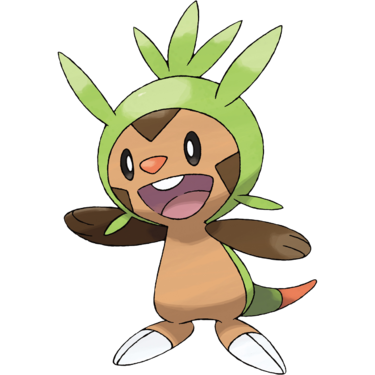
I think Chespin is incredibly well adapted for life in a shrubland biome. It is the only grass starter that has a rodent-like appearance, and despite it being based off of a hedgehog, which don't necessarily inhabit shrublands too often, the other aspects of its appearance closely resemble Pokémon like Sandshrew and Sandslash, which are definitely part of the shrubland ecosystem. In fact, I would bet that they likely share a common ancestor! Using its long sharp claws on its hind legs, chespin can quickly dig into the sand leaving its protected head and hard quills exposed.
Fire - Torchic

Torchic is a galliform, which is the supergroup of birds that includes chickens, turkeys, and peafowl. Prairie chickens are a large bird in the grouse family, also included in the group. They are common sights in shrublands across America, and I believe that Torchic would be no exception. One adaptation that stands out with Torchic is that they are incapable of flight. I think that this would benefit the development of Torchic as there are no trees to roost in in shrubland habitats. Thus, more energy can be input into the development of its legs, which we can see become very important fighting tools after it evolves.
Water - Totodile

It is always difficult choosing a Pokémon who's type is the opposite of the environment it's in. It would be the same if someone asked for the starters of a jungle biome and I had to think of what the fire starter may be! When considering a water starter for an area that is so hot and so dry, several things need to be taken into consideration. For one, will the Pokémon overheat? Does it have fur? What about its skin, is it thin and at risk of easily drying out? Is it amphibious? With all of these physiological traits in consideration, I think Totodile may be the best Water Pokémon for this particular environment. It is constantly dancing which is something that can really only be done on land, so clearly it is not that dependent on being in the water. Furthermore, as it is a reptile its skin is highly impermeable to water loss, and the light coloration of it may even help in thermoregulation.
I had a lot of fun with this ask! I hope I answered your question.
#pokemon#pokemon headcannon#pokemon science#pokemon biology#pokemon in our biomes#desert pokemon#ground pokemon#fire pokemon#torchic#chespin#totodile#prof spruce
10 notes
·
View notes
Note
Hello professor! In the vein of the ancient oceans post, it would be really cool to see a prehistoric planet-style post about the speculative habitat for all the fossil Pokémon, potentially even one for the "parts" of the SwSh fossils. Thanks for your hard work :)
Thanks for the question, sorry it took a little while to answer!
Without giving too much away, I am currently working on a couple Biomes posts regarding ancient areas. Please stay tuned - I may answer your question in the near future!
However, I will gladly answer your question about the fossils in SwSh, and honestly it is the funniest thing in the Pokémon franchise.
So I don't think I'll focus too much on the biology of the Galar fossil Pokémon because frankly, they're a mess. They clearly were mixed up in the resurrection process and thus are not accurately representing what species were present back when those species lived.
Back in the 19th century, fossil excavation and dinosaur research was an exciting new field of study. It was an intense and ruthless competition to see which paleontologist could discover the most. This granted this period the dub "Bone Wars." Most notably, a feud broke out between Edward Drinker Cope of the Academy of Natural Sciences of Philadelphia and Othniel Charles Marsh of the Peabody Museum of Natural History at Yale and they would undermine each other in their publishing, try to eliminate each other's research funding, practice bribery and blackmail, they even tried to steal and destroy the other's bones!
So where does this battle of egos tie in to Sword and Shield? Well, in order to discover the most species, sometimes these early paleontologists would make dinosaurs up, using a mish-mash of various bones. Marsh mounted a skull of a camarasaurus onto the body of an apatosaurus and called it a brontosaurus.

In the UK there were some Dino-mixups. In 1822 a doctor named Gideon Mantell discovered one of the earliest found fossils while visiting a patient in Sussex. This fossil was actually the tooth of what would later be called "Iguanadon." However, no complete skeletons were discovered for some time, so the body of the animal remained somewhat of a mystery. Even today you can find a statue of the early Iguanadon concept in London's Crystal Palace Park. However, the animal depicted in the statue rests quadrupedally on four legs. We now know Iguanadon was bipedal.

The reason that the fossil Pokémon in Sword and Shield are so hilarious is because that's almost exactly what happened in real life. Cara Liss is the fossil reviver for Sword and Shield, and her story is very much based off of early paleontologists like Cope and Marsh. She is hot-headed, egotistical, and in the anime is shown to make up the Pokédex entries for the Pokémon that she herself create from the fossils. She is clearly yearning to be the very best Pokémon paleontologist, and is thus making up Pokémon that she can claim as her own discoveries.
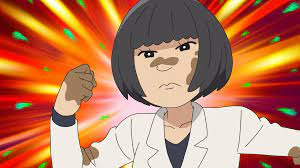
#pokemon#pokemon sword and shield#fossil pokemon#dracozolt#arctozolt#dracovish#arctovish#cara liss#pokemon biology#pokemon headcannon#pokemon science
16 notes
·
View notes
Text
Office Hours are now OPEN
Please submit any questions you may have regarding Pokémon biology, ecology, evolution, or whatever else is one your mind to my ask box.
I am currently working through some old asks and will then be starting research on a new Pokémon in our Biomes post, so I will get to your question rather quickly.
- Prof. Spruce
2 notes
·
View notes
Text
Office Hours Open Today 6:00pm - 9:00pm EST
A friendly reminder from your Pokémon Ecologist that my office hours are open tonight from 6:00pm - 9:00pm EST.
During this time I will be at my computer catching up on answering some questions, writing my next Pokémon in our Biomes post (minor spoiler - it won’t be a where, but a when) and will just generally be more responsive to any incoming questions.
Hope to see you there!
- Prof. Spruce
2 notes
·
View notes
Text
PSA About my Office Hours
I have decided to make a change to my office hours. They are now Wednesday and Thursday from 6:00 pm - 9:00 pm EST. This is not to discourage any of my students from submitting questions regarding Pokémon or otherwise, it’s purely to keep me on track with my posts and stay diligent with my research.
Also, I am not sure if I have mentioned this or not, but a big thank you to all of my students who stuck around the past few years while I dealt with some real life circumstances. I am so happy to be back, and seeing my ask box filled with Pokémon Biology questions is wonderful!
You can submit your questions here! During my office hours I am a little bit more prompt when it comes to my responses, but rest assured I will get to you!
3 notes
·
View notes
Note
Hi! This my first ask ever, and I wanted to know, which Pokemon live in Philadelphia?
Thanks for the ask! I would love to answer this question!
Philadelphia is a city rich with history and culture. Much like other metropolitan areas whatever Pokémon would be found here need to be accustomed to the hustle and bustle of city life. However, that's not to say that there are no surrounding natural areas. In fact, as rich as the city is with culture, there is a plethora of wildlife in the marshes and farm fields just outside the city that can support a huge diversity of wildlife. The forest types outside the city are generally Northern Mixed Hardwood forests and Appalachian Oak Forests. Together with the multiple freshwater marshes, rivers, ponds, and grasslands, there truly are few limitations as to what species may be present!
Grass - Grookey
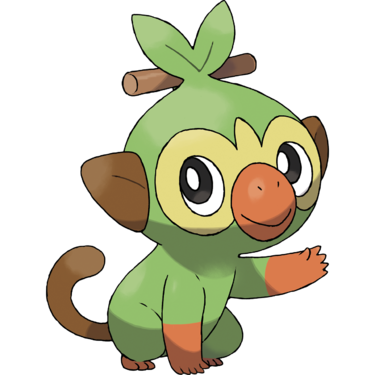
As the birthplace for many rock, jazz, R & B, and Hip Hop artists, Philadelphia has roots in music that run very, very deep. I think it's a safe bet that as a Pokémon that utilizes its natural sense of rhythm to attack but also nourish surrounding plant life, Grookey would be incredibly well adapted for life in the city. Considering its mobility and primate-like appearance I believe it is also adapted to be able to survive in the surrounding forests. Also, drumsticks used by musicians are commonly made from species like maple, oak, and hickory. These species are known as hardwood trees and because of their lack of non-supportive cells compared to softwood trees like pine, they are a lot stronger and slower growing than softwood trees. Thus, not only would Grookey have the "groove" necessary for life in Philly, but it would also have access to the best material to make its drumstick with!
Fire - Fennekin
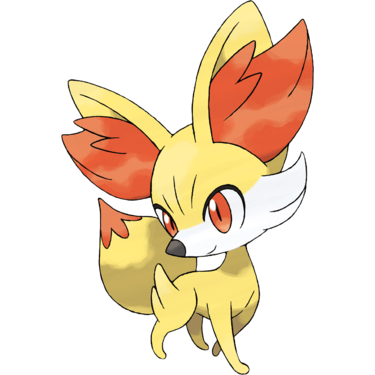
To be honest it was difficult to find the right fire Pokémon for Philadelphia. There are a lot of factors to consider when trying to hypothesize how Pokémon may best be suited to their native environment. Frankly, it was a bit of a process of elimination, but I think this makes the most sense. Fennekin is based off of the fennec fox, which is a fox species native to Northern Africa. Although Philadelphia is nowhere near as warm as Northern Africa, the surrounding environment is home to both the Red Fox and the Gray Fox. Foxes are opportunistic predators, meaning they are not the least bit picky when it comes to their next meal. As there is a ton of wildlife diversity surrounding Philadelphia and in the rest of Pennsylvania, I think its characteristics based off of species in the fox family (vulpes) will allow Fennekin to thrive well in this area. Furthermore, Fennekin is constantly grooming itself and is always concerned with its appearance. This sense of fashion and self-image would come as an adaptation in a city so rich with culture!
Water - Mudkip
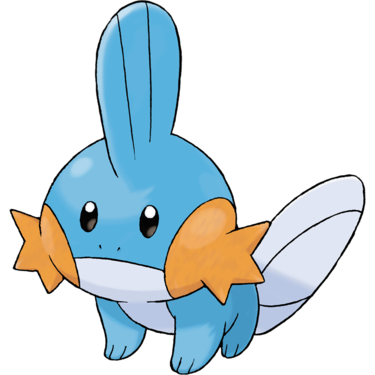
In the Heart Gold and Soul Silver Pokédex entries, Mudkip is said to "rest by covering itself in mud at the bottom of a river." With the Delaware River a big part of the Pennsylvania landscape, and with the many marshes and wetlands in the surrounding area, I think Mudkip would be well adapted for life in Philadelphia. Several other Pokédex entries say that it uses the fin on its head as a sort of radar to determine what is taking place around it. This may be useful in a busy city to help narrow its concentration and focus where there can be a lot going on at once. Furthermore, as I was concerned about its amphibian-like physiology, I was concerned at how necessary it was this Pokémon be close to water. However as I looked more into it, this Pokémon doesn't appear to require it be constantly submerged in water like the common mudpuppy (Necturus maculosus) which it is based off of. It is perfectly content being out of the water for prolonged periods of time.
I hope I answered your question! If you would like to know about the early route species or anything else just let me know and I can make an addition!
Thank you for reaching out!
#Pokemon#pokemon biology#pokemon in our biomes#native pokemon#prof spruce#pokemon ecology#pokemon headcannon
13 notes
·
View notes
Text
All My Native Pokémon Posts
Since I have been asked several times by several students which Pokémon may exist in their local region, I decided to condense all of my answers into one text post similar to the Pokémon in our Biomes Master List.
I encourage all my students to continue asking wonderful questions about which species might be present in their area! Let me know if you would like to know the starters available to your area, the first route rodent or birds, early bugs or cave Pokémon! It has been a lot of fun researching the local landscape and ecology of areas that I personally have not had the pleasure of exploring for myself!
With that being said, have a look at the list below if you are curious about the Pokémon in your area because I may have already written about it. But as always, if you have any other questions about Pokémon Ecology, ideas for new posts, or even just comments and feedback please let me know!
California - asked by @thetotallybadplaid(deactivated)
Grass - Chespin
Fire - Charmander
Water - Oshawott
~
Washington - asked by Anonymous
Grass - Treecko
Fire - Cyndaquil
Water - Froakie
~
Panama City, Panama - asked by @cari28ch3-me
Grass - Treecko
Fire - Chimchar
Water - Totodile
~
South Carolina - asked by @ogre-daddy
Grass - Rowlet
Fire - Tepig
Water - Totodile
Early Route Pokémon - Bidoof, Pikipek
~
Texas - asked by @kermitthefrogtshirt
Grass - Turtwig
Fire - Torchic
Water - Froakie
Early Route Pokémon - Spearow, Bunnelby, Noibat
~
California Central Valley - Asked by Anonymous
Grass - Turtwig
Fire - Torchic
Water - Squirtle
~
Southern Florida - Asked by Anonymous
Grass - Treecko
Fire - Tepig
Water - Totodile
~
Perth, Western Australia - Asked by Anonymous
Grass - Chikorita
Fire - Charmander
Water - Popplio
~
Toronto, Ontario - Asked by Anonymous
Grass - Chespin
Fire - Litten
Water - Oshawatt
~
Holland Marsh, Ontario - Asked by Anonymous
Grass - Snivy
Fire - Fennekin
Water - Squirtle
~
Philadelphia - Asked by @brunomybeloved-sanrio
Grass - Grookey
Fire - Fennekin
Water - Mudkip
~
Albuquerque - Asked by @guyinmink
Grass - Chespin
Fire - Torchic
Water - Totodile
~
I will update this list as I complete more My Native Pokémon Posts. Any feedback or comments is welcomed. Thanks for reading!
-Prof. Spruce
#pokemon#pokemon science#pokemon biology#pokemon in our biomes#pokemon in real life#native pokemon#pokemon variations#mewistheancestor#pokemon scarlet and violet#pokemon legends of arceus#pokemon sword and shield#pokemon headcannon#starter pokemon
40 notes
·
View notes
Note
What non-fossil pokemon would you expect to find in ancient oceans? (Sorry I know this is a really vague and broad span of time...)
This is just such an amazing question!
Ancient seas were such an alien environment. They had species present that were nothing like what we see today, but they definitely did have some similar to those we still have around.
When you talk about ancient oceans there are actually a number of different ocean pasts we can look at. For example, we could be looking at the Precambrian oceans (Pre meaning "before" and Cambrian meaning "Cambria", the Latin term for Wales, where rocks from the Cambrian era were first studied) which spanned over a geologic timeline of 4500 million years ago, essentially when the earth first formed, to 541 million years ago. It was during this time that the earth was being constantly bombarded with asteroids, and there weren't really any complex life forms. Everything living for the most part were rudimentary prokaryotes that just figured out how to convert sunlight into energy.

But as the timeline moves forward through to the Paleozoic (Paleo is Greek for "old" and zoic meaning "life") we see the Cambrian explosion, where multicellular life in ancient sees really diversified. 542-488 million years ago the Cambrian explosion gave rise to many taxonomic groups that we see today, including trilobites (Kabuto), mollusks, early chordates (animals with backbones) and all kinds of arthropods. One of these arthropods is anomalocaris, who looks like this:

Now this guy looks familiar...
The Cambrian explosion gave rise to a lot of the animals that we see today, so it makes sense that there are several Fossil Pokémon that would have came from this time. However, there are plenty of species of Pokémon that are still around that although are not the exact same species as those from the Cambrian period, there are definitely some that are direct relatives, and the list goes on as we move forward through the Cambrian into Mesozoic and Cenozoic eras.
I know I haven`t answered your question but this has encouraged me to make a new Pokémon in our Biomes post: Ancient Oceans! Stay tuned for a more in-depth look at some water Pokémon who have been around for hundreds of millions of years!
#Pokemon#pokemon biology#pokemon ecology#prof spruce#pokemon headcannon#pokemon in real life#pokemon evolution
5 notes
·
View notes
Note
I had a dream last night that I had an emotional support Seviper

Weird... I had a dream I had an emotional support Zangoose.
6 notes
·
View notes
Note
Hello professor, welcome back and congratulations on the school! If you're looking for post ideas, could you maybe do something about fire type Pokémon and where to find them? It seems like they're almost always found around volcanoes in the games, but are there maybe other biomes that would comfortably support fire types? Thanks!
Thank you for the kind words!
I have already done a post on Volcanic Regions which you can find here, however it is not the only place where you could find Fire type Pokémon!
But let's dig into what a fire type needs to survive, and how that might determine where a particular species might live.
So a fire at its core needs four things; heat, oxygen, fuel, and a chemical reaction. If you take away any of these four elements, ie. you don't have a chemical reaction occur or if there is no oxygen present, a fire will not occur.

So tying this into basic biology, animals that produce their own heat internally are endothermic, or "warm blooded." One of the trade-offs with an animal being warm blooded is that it generally requires a heavy caloric intake. That's why large ungulates (hoofed mammals) seem to be constantly eating while a python may have one large meal every few months.

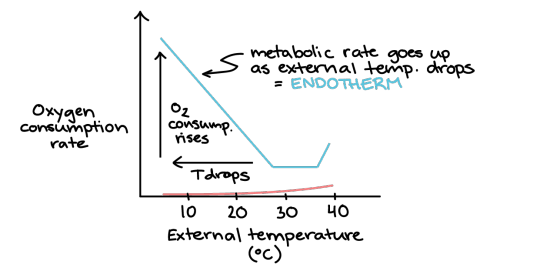
So what does this mean for Pokémon species that can create fire? Well, it means that in order for Flareon to have an "internal body temperature of 1700 degrees Fahrenheit" (Pokémon Crystal Pokédex) it would need an insane amount of calories. If the human body needs roughly 2000 calories a day to operate at an internal temperature of 98.6 degrees, we can do some basic math to find that Flareon would need 34500 calories!

So based off of its design of a fox/cat predator, let's say that the average field mouse is a staple part of its diet. With a quick Google search I found that the average field mouse yields only about 30 calories. Assuming that it needs to bring its internal body temperature to 1700 degrees to use a fire attack once a day, that would mean it would need to eat 1150 field mice per day!
Each Pokémon is unique, and perhaps the caloric requirement to produce such high internal body temperatures may differ from Pokémon to Pokémon, much like animals in real life. However, one thing is for certain: in order to provide enough energy to a Pokémon so they can produce fire, there needs to be enough fuel in their tank! There may also be other means to help produce heat in a Pokémon's body, as I point out in the Xeric Shrubland post where I mention that Houndour and Houndoom's sleek design not only reduces surface area to retain heat but also absorbs the sun's heat through the black coloring of its fur!
I hope this answered your question, and looking through some of my old posts I realize that I haven't given fire type Pokémon a whole lot of attention. Perhaps it's time I create a new post for a biome that supports more fire type Pokémon.
Thanks for reaching out!
6 notes
·
View notes
Note
Glad you're back and congrats. Have you done rivers/lakes/freshwater biomes?
Thank you for the kind words!
Yes I have done a Pokémon in our Biomes post on Wetlands and you can find it here!
The Wetlands Biome post is probably my favorite as wetlands are such an amazing ecosystem and serve an incredible array of purposes. Aside from hosting a wonderful assortment of plants and animals all with their own special adaptations, wetlands also filter freshwater and sequester atmospheric carbon.
Not to give anything away, but some Pokémon species you might find in wetlands include the Poliwag line, Yanma/Yanmega, and Magikarp! There are many others, however, and I think I may work on a Part 2 soon.
Thank you for reaching out!
1 note
·
View note
Text
Your Pokémon Ecologist is BACK
Hello students,
I want to thank you all for your patience the past few years.
Your dear Professor Spruce is back from a bit of a hiatus to bring you more Pokémon Ecology related content!
My last Pokémon in our Biomes post was the Boreal Forests pt. 2 from October 2019, so it has definitely been a minute since I have written any new content. However, I have graduated with my Honors Bachelor of Science Degree in Environmental Biology and I am currently working (irl) as a REAL LIFE biologist. The past couple years I have truly honed my skills in field identification and understanding of applicable biological practices, so I’m confident that this upcoming material I’m planning on will really impress you.
I am planning on continuing on the Pokémon in our Biomes series, answering all of the questions that have been piling up in my inbox, and just generally being a better Pokémon Professor.
Maybe your Prof. Spruce will finally be making a Tiktok as well! Who knows.
For now, stay tuned for more great Pokémon Headcannon.
If anyone has any ideas for the next Pokémon in our Biomes post let me know!
#mewistheancestor#pokemon#pokemon biology#pokemon headcannon#pokemon in real life#pokemon scarlet and violet
15 notes
·
View notes
Text
We are LIVE
I am now streaming live here on Mixer with MisterMcNelson and we are counting down the minutes before we can play Sword and Shield!
18 notes
·
View notes